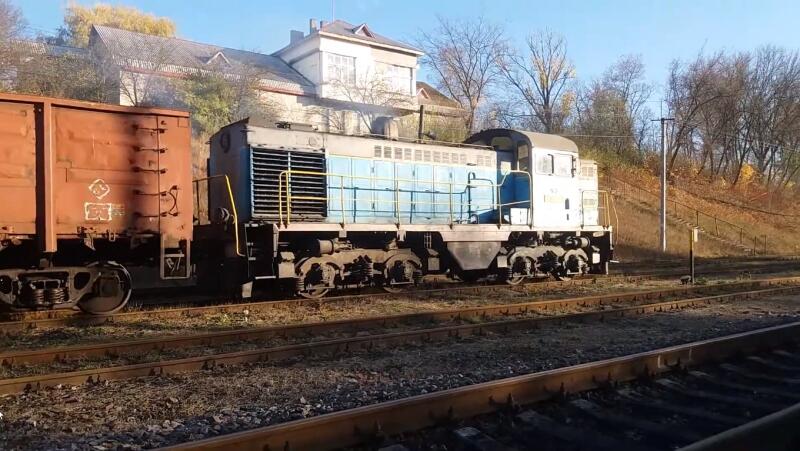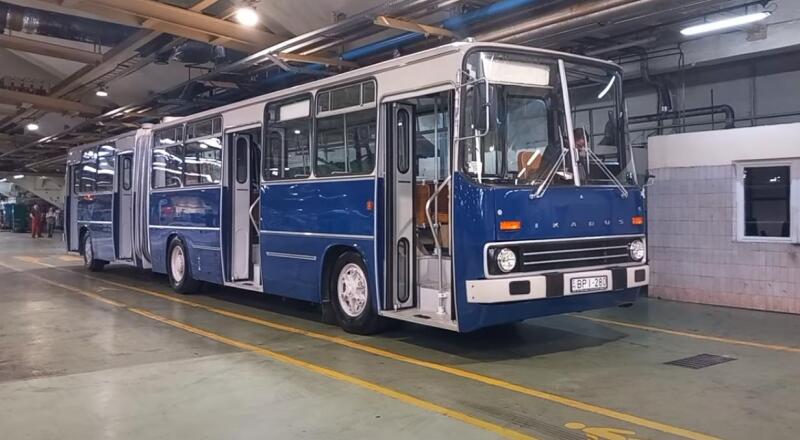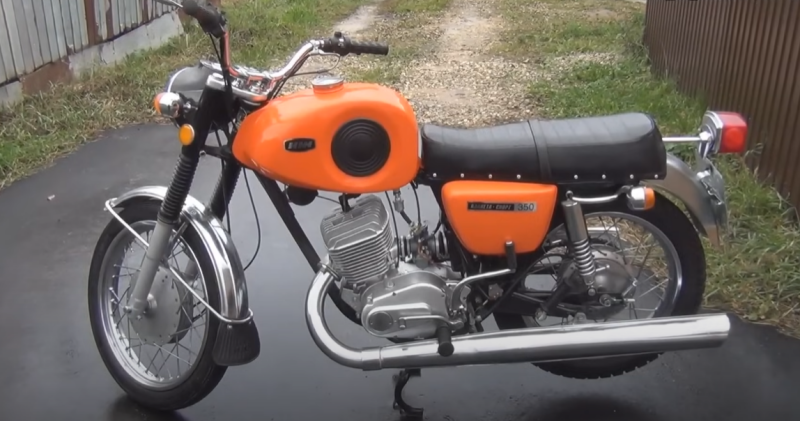First of all, experienced engineers paid attention to the wobbling of the equipment when moving in a straight line. This was due to the small rigid base of the crew. Problems also concerned the gearbox and the distance of refrigerators from the diesel engine. Along with other shortcomings, a recommendation emerged to seriously refine the model.
 Maneuvering TGM3 – time has not been kind to the veteran. Photo: youtube.com
Maneuvering TGM3 – time has not been kind to the veteran. Photo: youtube.comBy that time, the Lyudinovsky plant had managed to assemble only three units of equipment developed by Voroshilovgrad specialists. After this, an urgent process of thoroughly redesigning the original locomotive was launched in the late 50s.
Alterations that led to a name change
The work, led by the chief designer of the enterprise A. Khrychikov, led to the fact that the diesel locomotive received too many external and internal modifications. Therefore, it was no longer possible to preserve its original name.
The first-born, developed directly by the employees of the Lyudinovsky diesel locomotive building, appeared in 1959. It was named TGM3.
The engineering team of the enterprise approached the assigned task with all seriousness. They were full of enthusiasm, because for the first time they had to deal with the direct design of new equipment. Therefore, the improvements affected several important elements of the locomotive:
✅ different body design
✅ the refrigerator has been moved to the same plane as the diesel engine
✅ two-axle pivot bogies appeared
But the creators could not be accused of excessive vanity. They readily used elements borrowed from diesel locomotives of previous designs. Especially with regard to the successful and sought-after TE3. From this technology they migrated to the new product:
✅ axle boxes and axle jaws
✅ brake gear elements
✅ spring suspension parts
✅ end beams
The electrical circuit of the TGM3 was designed so that it could perform labor-intensive tasks in a CME (system of many units) coupling. This was also facilitated by the fact that longitudinal balancers were used for spring suspension.
 TGM3 on the stretch. Photo: youtube.com
TGM3 on the stretch. Photo: youtube.comAfter assembling five experimental units of equipment, the company switched to mass production in 1960. But this process was preceded by testing of the new product under the patronage of the same VNITI. They were also used for comparison with other models of railway locomotives. Tests have shown a more gentle effect on the road surface than that of the 9P series steam locomotive and the TGM1 diesel locomotive.
Technical side of TGM3
The first Lyudinovo locomotive received a reliable hood-type body with a flat ceiling. There were also cast jaws for trolleys with welded frames and rubber gaskets in the spring suspension system. They provided a better shock-absorbing effect. Here are some of the characteristics of the locomotive:
✅ 750-horsepower M751 diesel
✅ hydraulic transmission with transformer GTK-II
✅ main generator VT-275/120
✅ fuel reserve - 2,8 tons
✅ oil reserve – 300 l
Possessing a grip weight of 68 tons, it could reach speeds of up to 30 km/h in shunting mode, and twice as high in train mode. The equipment produced maximum performance in the transport mode of movement (90 km/h).
 TGM3 performs maneuvers. Photo: youtube.com
TGM3 performs maneuvers. Photo: youtube.comInitially, TGM3 was supplied for the needs of Soviet industrial enterprises. Over time, it began to be used in the shunting operation of the Ministry of Railways system. Very soon several modifications of the locomotive appeared, which extended their total assembly period until 1977. About 16 diesel locomotives of this series were assembled in different versions over 4000 years. Only a little more than a third of them later worked in the Ministry of Railways system. But the geography of the technology’s use included almost all the railways of the Soviet Union.










